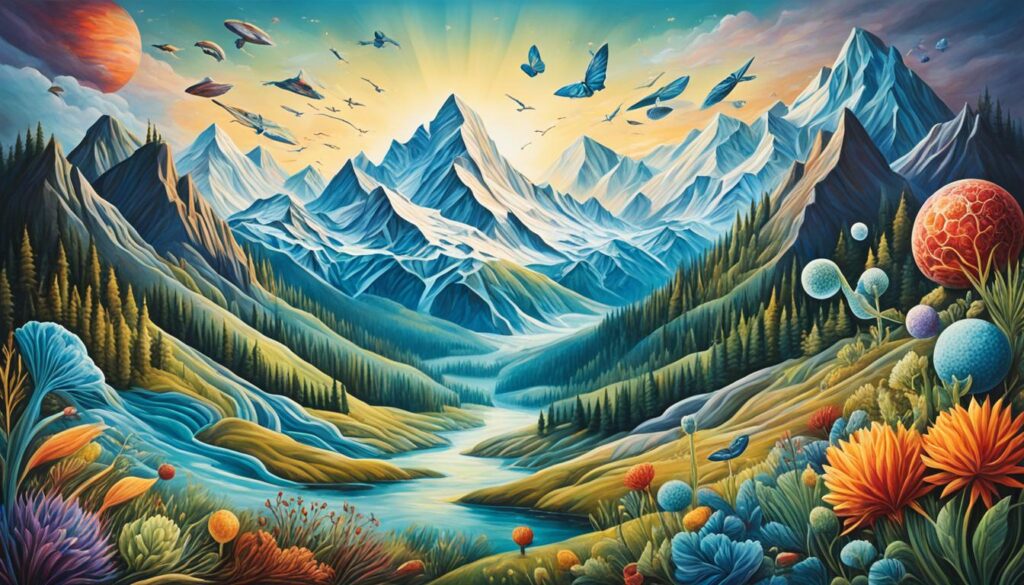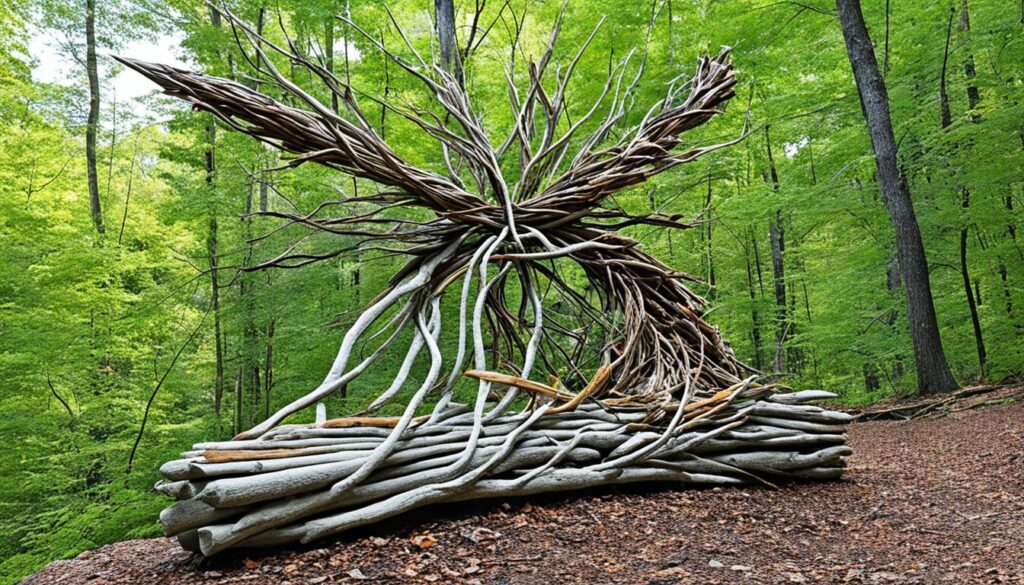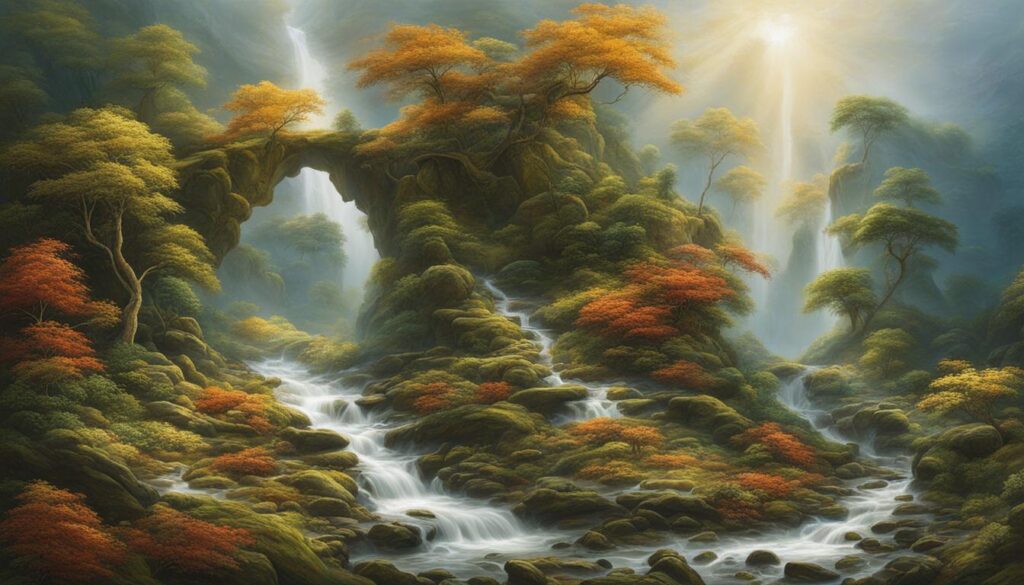Art and science collaboration has resulted in some of the most captivating works in the world. Environmental art, in particular, has seen artists and scientists come together to create impactful pieces that draw attention to mother nature.
Nature-inspired art has changed the way we see the world around us. By using scientific aesthetics, artists have been able to capture the essence of the environment and inspire positive change.
In this article, we delve into the history and evolution of art and science collaboration and the ways in which nature-inspired art can convey important messages about a range of environmental issues. We also examine the collaborative process between artists and scientists and how they work together to create groundbreaking artwork that pushes the boundaries of creativity.
Join us as we explore Sculpting Nature: The Intersection of Science and Environmental Art.
The Evolution of Art and Science Collaboration
Art and science collaboration has a rich history, extending back to the Renaissance era. During this time, artists such as Leonardo da Vinci and Michelangelo Buonarroti drew inspiration from scientific discoveries and sought to represent the natural world in their artwork.
Throughout history, artists continued to be inspired by science, pushing the limits of their creativity and exploring new mediums and techniques. As science progressed and our understanding of the world deepened, the relationship between art and science evolved, becoming increasingly collaborative.
In the modern era, art and science collaboration has become more formalized, with artists and scientists teaming up to create impactful works that communicate important messages. As environmental issues have become a growing concern, artists and scientists have come together to create nature-inspired art that raises awareness about these issues.


Today, art and science collaboration is an essential part of contemporary art, with cross-disciplinary projects and exhibitions becoming more common. Through this collaboration, we are able to see the world in new ways, and explore the connections between art, science, and our environment.
Nature-Inspired Art: A Scientific Perspective
Environmental art is becoming increasingly popular as a medium for artists to raise awareness about the natural world and its challenges. Nature-inspired art, which draws inspiration from the natural world, often incorporates scientific principles into its aesthetic design. These artists use their work to communicate ideas and raise questions about environmental issues, such as climate change and biodiversity loss.
Scientific aesthetics, a branch of philosophy concerned with beauty in science, highlights the visual elements of scientific principles. Environmental artists use scientific aesthetics to carefully craft their pieces, incorporating ecological systems and biodiversity into their work. For instance, artist Andy Goldsworthy creates sculptures entirely out of natural materials, such as leaves and twigs, often highlighting the delicate balance of the natural world.
By integrating scientific principles into their work, artists create pieces that not only convey a message but also exude visual beauty and complexity. This approach to art engages the viewer on multiple levels, prompting them to consider scientific concepts that they may not have considered before.


“My art is an attempt to reach beyond the surface appearance. I want to see growth in wood, time in stone, nature in a city, and I do not mean its parks but a deeper understanding that a city is nature too—the ground upon which it is built, the stone with which it is made.” – Andy Goldsworthy
The Creative Process: Bridging Art and Science
Art and science collaboration is essential in creating innovative and thought-provoking environmental art. The collaborative process between artists and scientists involves merging artistic creativity with scientific knowledge.
By working together, artists can gain a deeper understanding of scientific principles and recent discoveries. This understanding can then inform the creation of artworks that convey messages about the natural world in exciting ways. In turn, science can benefit from the creativity of artists, who can help to communicate complex ideas in new and engaging ways.
“When artists and scientists collaborate, they can push each other to think outside the box, resulting in powerful and impactful works.”
In addition, the collaborative process often involves experimentation with new techniques and materials. For instance, artists may work with novel materials that allow them to create sculptures or installations that are more sustainable, eco-friendly, or expressive. By working with scientists, they can also identify new ways of incorporating scientific phenomena, such as light, sound, or movement, into their artworks.


Overall, the creative process of bridging art and science is a crucial aspect of environmental art. By bringing together different perspectives, knowledge, and skills, artists and scientists can create impactful works that inspire positive change and highlight important environmental issues.
Conclusion
In conclusion, the collaboration between art and science is a powerful tool for creating impactful environmental art. By merging artistic creativity with scientific knowledge, artists can convey important messages about environmental issues that inspire positive change.
It is clear that this collaboration has a rich history and an exciting future. As we continue to face pressing environmental issues, bringing together artists and scientists is more important than ever.
Through this partnership, we can draw attention to environmental issues, promote a deeper understanding of our relationship with the natural world, and inspire individuals and communities to take action.
Ultimately, the intersection of art and science provides a unique opportunity to explore and shape our perception of nature and the world around us. We look forward to seeing the transformative works that emerge from this collaboration in the future.
